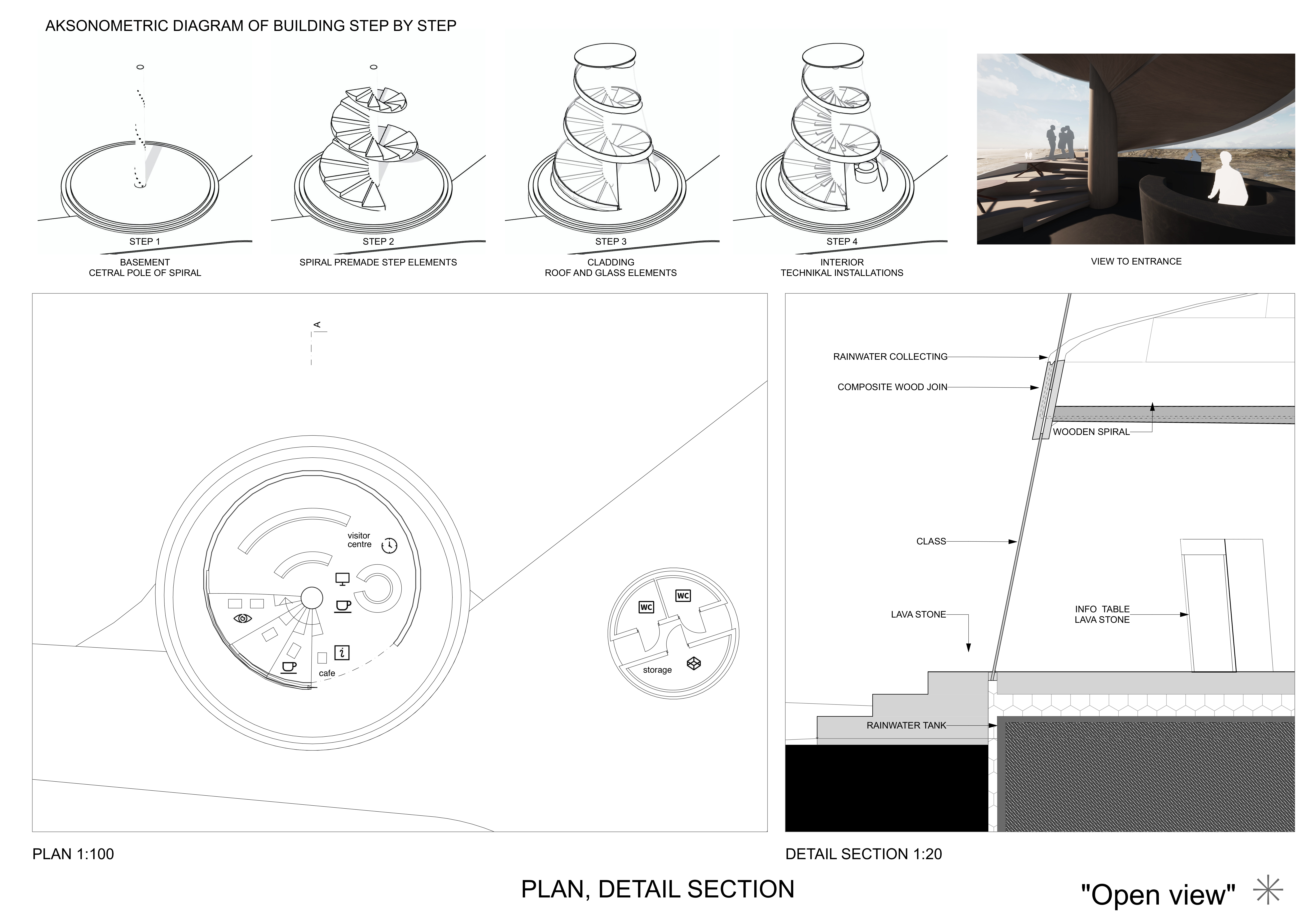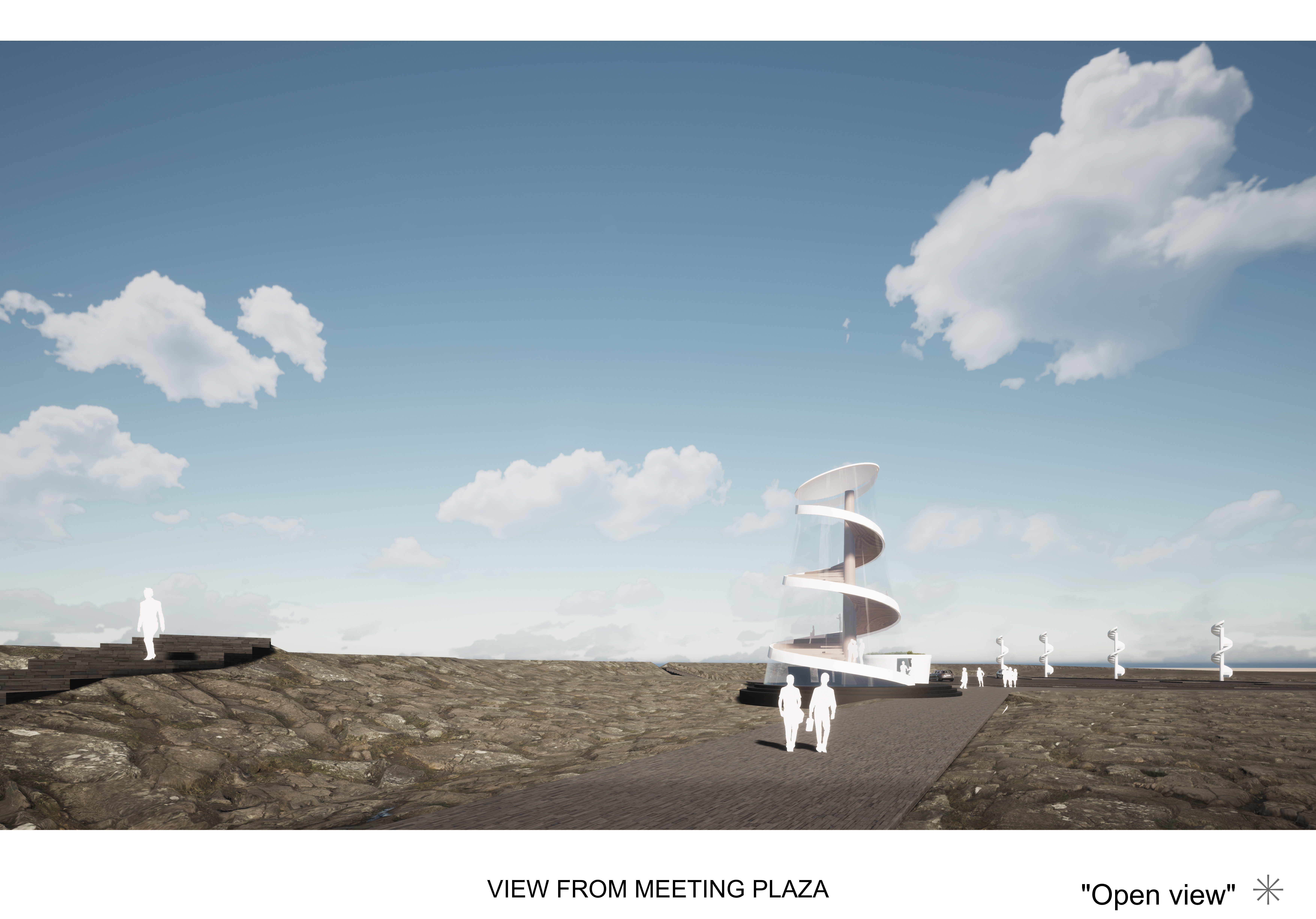5 key facts about this project
The visitor centre is located in proximity to a cave, designed to connect with the surrounding natural environment. The centre enhances the visitor experience by offering a range of amenities and features in a layout that promotes ease of movement. Its design emphasizes functionality alongside sustainability, creating an inviting space for exploration and relaxation.
Architecture Concept
The overall layout is structured with open pathways and designated viewing areas that encourage visitors to engage with the landscape. Each part of the visitor experience is considered, from the entrance to the varied amenities such as the café and restrooms. The inclusion of a meeting plaza facilitates social interactions, providing a space for groups to gather.
Building Structure
This design incorporates various building steps, including a basement with a central pole supporting a spiral structure. Premade step elements create a rhythm to the design, while cladding components like the roof and glass contribute to the centre's aesthetic. Carefully planned technical installations ensure that the structure functions well without compromising user experience.
Sustainability Features
An important aspect of the visitor centre is its focus on sustainability, highlighted by a rainwater collection system. This system captures rainfall from the roof, filtering it for storage and reuse. Additionally, energy is generated from vertical windmills nearby, underscoring a commitment to reducing carbon emissions and promoting environmental responsibility.
Materials and Design Details
Materials chosen for this project include composite wood with a white finish, clear glass, natural wood, and dark gray lava stone. Each plays a role in creating a comfortable, inviting atmosphere. The spiral viewing tower stands out, providing wide views of the surroundings. Café seating at its base allows visitors to relax while enjoying the scenery. The roof features lighting that improves visibility at night, offering a welcoming feel after sunset.























































